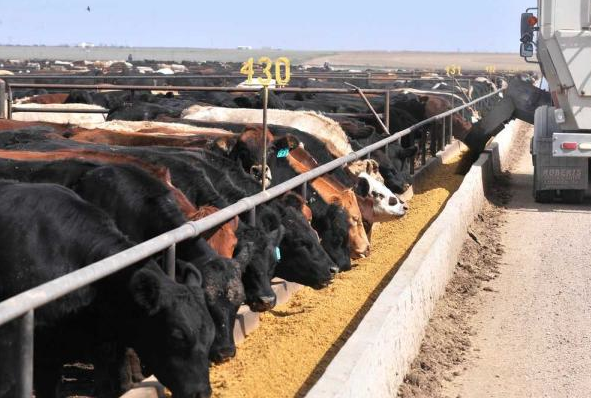Acidosis is a very serious disorder that is talked about by nutritionists and livestock enthusiasts, but is Acidosis and more importantly how do you prevent it? Dr. Susan Day and Research Professor in the Department of Animal Sciences at The Ohio State University, Dr. Francis Fluharty, help explain more about this disorder.
What Is It?
Acidosis is a nutritional disorder. It is most prevalent when high-grain diets are fed. The large amounts of starch and sugar in these diets stimulate the bacteria that make lactic acid and the bacteria that normally utilize the lactic acid (Megasphaera elsdenii, Selenemonas ruminantium, and Selenomonas lactilytica) cannot keep up.
There are two types of acidosis:
- Chronic – in this case the animal tries to cope by adjusting their eating patterns. The animal decreases intake to the point where they do not consume enough feed on a daily basis to meet their maintenance requirements. Then the next day they over-consume, which then leads to another day of under-consumption.
- Acute ‑ severe case occurs quickly (grain engorgement), resulting in bloat. Bloat is an excessive accumulation of gas in the rumen and reticulum. Bloat is a side effect of acidosis.
What Causes It?
Acidosis is caused by low rumen & blood pH from a rapid ingestion and digestion of starch. The processing of grains through ensiling, steam flaking, grinding, and pelleting all increase the incidence of acidosis. Any type of processing that increases the surface area available for bacterial attachment increases the number of bacteria digesting feed at any one time. Small grains such as wheat, barley, or steam flaked corn, have more surface area available for bacterial attachment, due to the structure of the starch granules. These can lead to a very rapid fermentation, which leads to more lactic acid, the cause of acidosis.
Lactic acid causes the rumen pH to decline rapidly. The optimal rumen pH should be between 6.0 and 6.2. When the rumen pH drops below 6.0, bacteria that digest fiber begin to die and fiber digestion is depressed. When lactic acid is being over-produced, the rumen pH continues to decline and can fall below 5.5, at which point many other rumen bacteria species also begin to die.
What is the Impact on the Animal?
- Lactic acid is absorbed across the rumen wall into the blood, and lowers the pH of the blood.
- When the pH of the blood declines, capillaries in the esophagus constrict, causing a constriction of the muscles in the esophagus.
- The ruminant can no longer expel gas from the rumen. It cannot regurgitate its food (chew its cud).
- Less saliva is swallowed, lowering its buffering capability.
- A buildup of gasses (mostly carbon dioxide; CO2 and methane; CH4) results.
- The rumen expands (bloats) to the point where the animal cannot breathe, because the rumen puts pressure on the lungs. Cattle with bloat take short, rapid breaths.
- The animal will suffocate and die without treatment. The lungs are compressed downward onto the heart, increasing the pressure needed to pump blood, and the animal either suffocates or has a heart attack.
How Can It Be Prevented?
- Use any BioZyme product – VitaFerm, Sure Champ or Vita Charge. All BioZyme products contain Amaferm. Amaferm is helpful in reducing the incidence of acidosis, and the side effect of acidosis: bloat. Amaferm does this by increasing the growth rate of several strains of the lactate utilizing bacteria (Megasphaera elsdenii, Selenemonas ruminantium, and Selenomonas lactilytica) (Beharka, A. A. and T. G. Nagaraja.1998). Amaferm is so effective that its addition increased lactate uptake over 700% in one study (Nisbet, D.J. and S.A. Martin. 1990)
- Increase the frequency of feeding
- Increase the percentage of roughage in the diet. This could be soybean hulls, whole cottonseed, dried distillers grains, wheat midds, ground straw or hay
- Feed complementary grain sources to increase the time of ruminal digestion, so that less starch is available at any one time. Ex. Whole corn versus ground corn
- Implement a gradual diet adaptation period that ranges from 10 to 14 days.
If you have more questions about acidosis or nutrition, please contact the Dr. Susan Day, at 816-344-5753 or email champ@biozymeinc.com.


